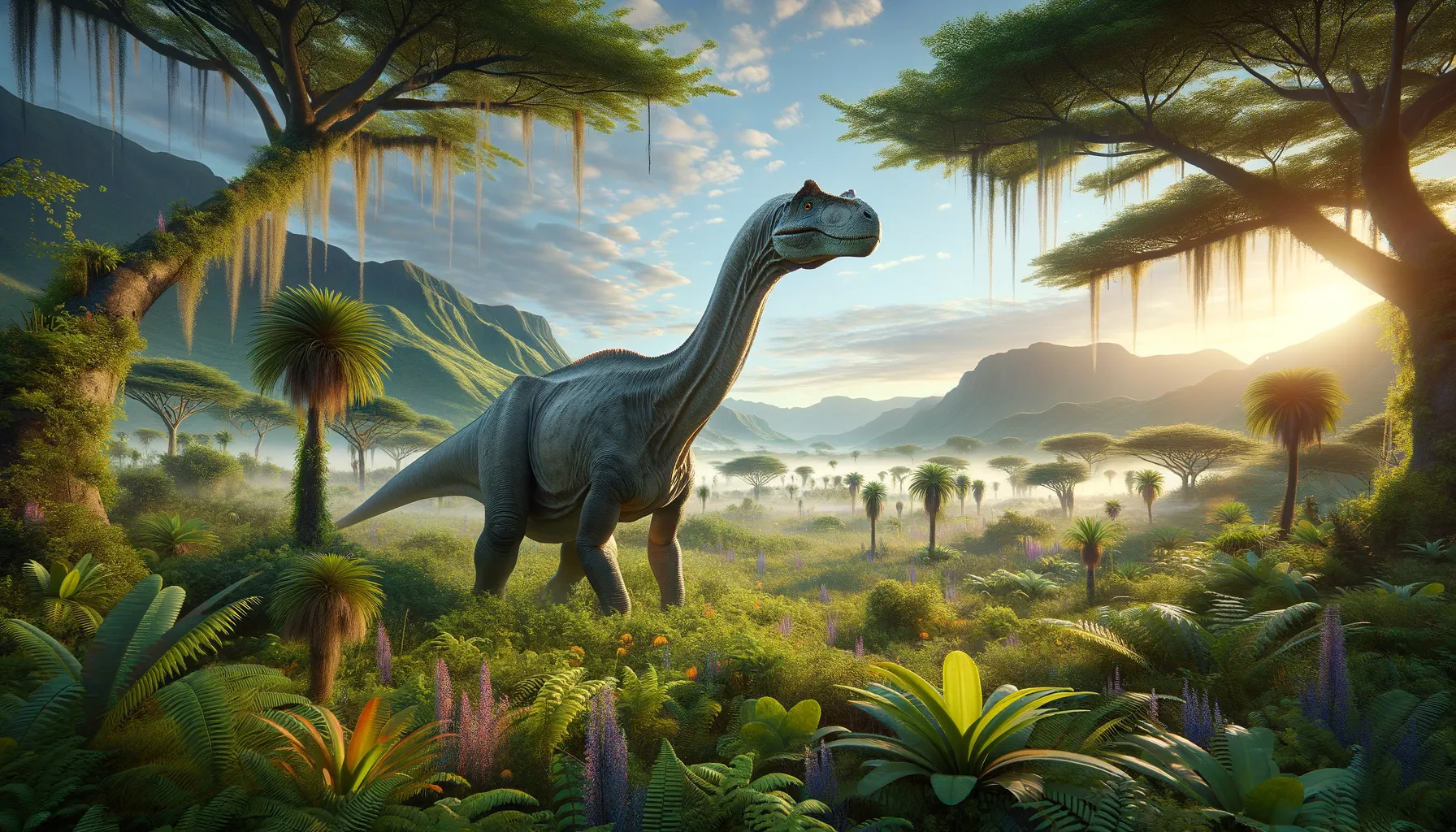
Karongasaurus
A Cretaceous giant of gentle grace.
Period
Cretaceous
Length
Roughly 8 meters from head to tail.
Height
About 2 meters at the hips.
Weight
Approximately 1,000 kilograms.
Karongasaurus is a lesser-known dinosaur that roamed the prehistoric landscapes of Africa during the early Cretaceous period. As a sauropod, it belonged to the group of plant-eating dinosaurs, recognized for their long necks and tails. Its discovery adds valuable information regarding the distribution of sauropods in Gondwana, the southern supercontinent. Although not the largest of its relatives, Karongasaurus would have played a vital role in its ecosystem as a gentle giant.
Diet
Karongasaurus was herbivorous, feeding on a diet rich in plants. Its long neck likely helped it reach higher vegetation, giving it access to a variety of flora.
Hunting
Being a plant eater, Karongasaurus did not hunt. Instead, it would have spent significant time grazing and moving through open plains in search of food.
Environmental challenges
During its time, Karongasaurus faced challenges such as changing climates and the spread of new plant species. Predators, though unlikely to directly target such a large animal, would have been a threat to juvenile and weaker individuals. Additionally, competition with other herbivores for food resources would have been a constant struggle. Seasonal variations might have affected the availability of its food sources, requiring it to move to new areas.
Speed
Karongasaurus likely moved at a slow pace.
Lifespan
Estimated to have lived for several decades.
First discovery
Discovered in Malawi, Africa, in the year 2006.
Fun Facts
- Karongasaurus was a type of dinosaur known as a titanosaur, which were some of the largest creatures to ever walk the Earth.
- This dinosaur lived around 110 million years ago during the Early Cretaceous period.
- Karongasaurus fossils were first discovered in Malawi, Africa, giving this dinosaur its unique name.
- Despite being a giant, Karongasaurus, like other titanosaurs, likely had a small head compared to its massive body.
- It was an herbivore, meaning Karongasaurus feasted on plants, which would have been plenty in its environment during its time.
- The discovery of Karongasaurus has helped scientists understand more about the distribution of dinosaurs in Africa.
- Karongasaurus is one of the relatively lesser-known dinosaurs, with only a few fossil remains that have been studied to learn more about its life.
Growth and Development
Karongasaurus hatched from eggs and grew rapidly in its early years to avoid predation. As with many sauropods, it would have had a long growth period, reaching full size over many years. Its development involved significant changes in bone structure to support its massive body.
Habitat
This dinosaur lived in environments that were likely lush with plant life, supported by the region's warm climate. The habitat could have included river valleys and floodplains, providing essential water sources. Its range might have included both open spaces and more wooded areas, offering diverse dietary options.
Interaction with other species
Karongasaurus likely coexisted with other herbivorous dinosaurs and potentially smaller carnivores. Its large size meant it had few predators, although it may have been part of a dynamic ecosystem with varied species. Communication would have been minimal, although it might have used vocalizations for basic interaction.
Natural lifespan
Its natural lifespan could extend to 70 or 80 years.
Reproduction
Reproduction would have involved laying eggs, with possible communal nesting sites. Its eggs were likely laid in clutches, providing better survival odds for the offspring. Parental care, if any, would have been minimal post-hatching.
Social behaviour
Karongasaurus may have lived in herds, offering protection against predators. Social interactions would have included following herd dynamics and maintaining group cohesion. Herd living might have also facilitated easier sharing of vast feeding grounds.
Fossil locations
Fossils of Karongasaurus have been primarily found in Malawi, Africa. This location provides insights into the distribution of sauropods in the Cretaceous. Fossils are limited but essential for understanding the paleobiogeography of its era.
